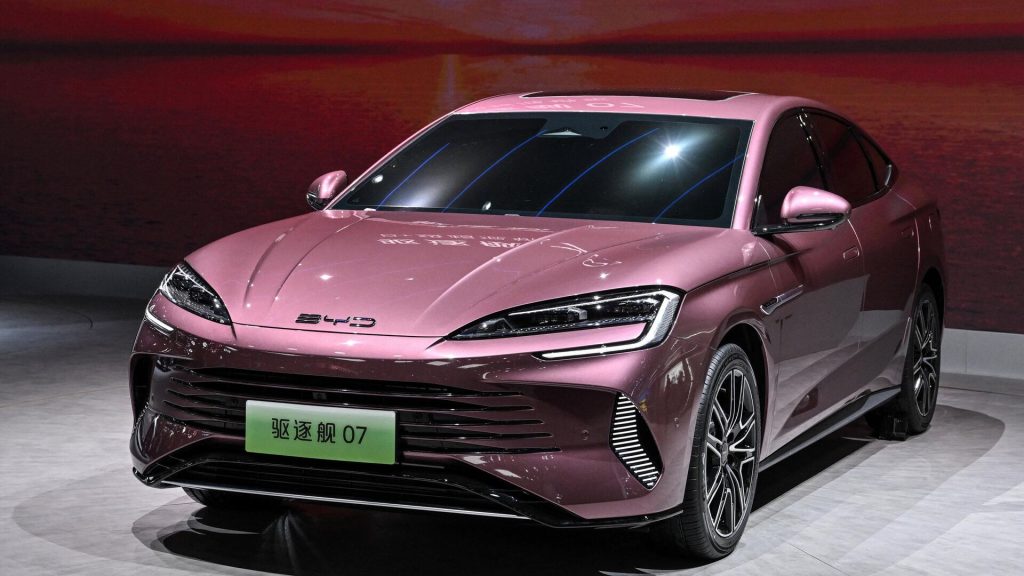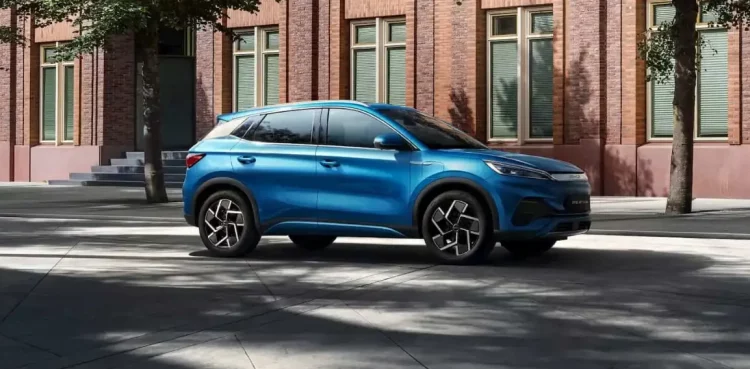The global automotive industry is undergoing a transformative shift as governments around the world enforce increasingly stringent regulations on vehicle emissions and push for the widespread adoption of electric vehicles (EVs). As climate change concerns rise and governments accelerate efforts to meet carbon neutrality targets, traditional automakers—those that have built their empires on internal combustion engine (ICE) vehicles—now face enormous challenges in adapting to these policy changes. The question remains: Can these traditional carmakers swiftly adapt to the rapidly evolving regulatory landscape for electric mobility, or will they falter under mounting pressure?
This article will explore the evolving EV regulations that are reshaping the automotive industry, the challenges faced by legacy automakers, and the strategies they must adopt to successfully navigate this paradigm shift.
1. The Changing Regulatory Landscape: From Emissions to EV Mandates
Governments worldwide are implementing tighter regulations on vehicle emissions, aiming to drastically reduce pollution and combat global warming. The goal is to accelerate the transition from fossil-fuel-powered vehicles to zero-emission electric vehicles.
1.1 Tightening Emission Standards
Regulations on vehicle emissions are becoming stricter each year. European countries, the United States, and China are leading the charge, setting ambitious emission reduction targets for the automotive sector. For example:
- The European Union has introduced the Euro 7 emissions standard, which will require automakers to reduce nitrogen oxide and particulate matter emissions to unprecedented levels. These standards are expected to make it increasingly difficult for traditional ICE vehicles to meet regulatory requirements without substantial modifications.
- In the United States, the California Air Resources Board (CARB) is adopting similar policies, mandating a significant increase in the percentage of electric vehicles sold, while tightening limits on tailpipe emissions from ICE vehicles.
- China is also ramping up its fuel efficiency standards and expanding its New Energy Vehicle (NEV) quotas for automakers, requiring manufacturers to significantly increase the number of EVs in their fleets.
As these regulations continue to tighten, automakers face the reality that failing to comply could result in severe penalties, loss of market share, and damaged reputations.
1.2 Transition to Zero-Emission Mandates
Some governments are going beyond emissions limits and are setting zero-emission mandates. For example:
- The European Union has announced that by 2035, all new cars sold in the EU must be zero-emission, effectively banning the sale of new internal combustion engine (ICE) vehicles.
- In California, one of the largest vehicle markets in the world, the California Air Resources Board (CARB) has already set a 2035 deadline for all new cars to be electric or zero-emission vehicles.
These hard deadlines leave traditional automakers with little choice but to accelerate their EV efforts or risk losing market access.
1.3 Emission Penalties and Financial Impact
To enforce compliance, governments are imposing financial penalties on automakers that fail to meet emissions standards or zero-emission vehicle quotas. For instance:
- In the European Union, automakers that exceed CO2 emission limits face fines of up to €95 per gram per vehicle, which could amount to billions of euros for large manufacturers.
- Similarly, China has adopted a “carbon credit” system, where automakers that fail to produce enough NEVs must buy credits from companies that exceed their targets, leading to additional costs.
As a result, non-compliance with emissions and EV production regulations can be financially catastrophic, further increasing the urgency for traditional automakers to transition quickly.
2. The Challenges Faced by Traditional Automakers
The push for stricter electric vehicle regulations presents unique challenges for legacy carmakers, particularly those who have built their operations around traditional ICE vehicles.
2.1 High Investment Requirements
One of the biggest hurdles faced by traditional automakers is the massive investment required to shift from internal combustion engine vehicles to electric vehicles. This includes:
- R&D Investment: Developing electric drivetrains, advanced battery technology, and charging infrastructure requires enormous research and development (R&D) expenditure.
- Factory Overhaul: Automakers must retool existing factories or build new production lines dedicated to EVs, which requires significant capital investment. Many manufacturers are finding it challenging to juggle the need to maintain production of traditional ICE vehicles while ramping up EV production.
- Battery Supply Chains: The rise of electric mobility is also driving up demand for batteries, which are the most expensive component of electric vehicles. Securing a stable supply of lithium, nickel, and other raw materials for battery production is crucial, but supply chain disruptions and fluctuating prices are major obstacles for traditional carmakers.
2.2 Brand Identity and Consumer Perception
Many of the world’s legacy automakers have spent decades building strong brand identities around their internal combustion engine vehicles. Transitioning to EVs is not only a technical challenge but also a branding challenge.
- Consumer Trust: Traditional automakers must persuade their established customer base that their EV offerings are as reliable and high-quality as their ICE vehicles. This can be a difficult task, especially when newer brands like Tesla have built their reputation on cutting-edge electric vehicles.
- Cultural Shift: Shifting from internal combustion engine (ICE) vehicles to EVs requires a deep cultural shift within automakers. For companies with a legacy of gas-powered cars, there may be resistance from both employees and suppliers, making it harder to embrace the change in a timely manner.
2.3 Timing and Market Pressure
As the regulatory deadlines approach, automakers are under increasing pressure to shift to electric mobility. Many traditional carmakers are already late in this transition, with companies like Volkswagen, General Motors, and Ford only starting their aggressive push into EVs in recent years.
- Time-to-Market: Automakers must accelerate their EV development timelines, but developing new models from scratch takes years. With EVs expected to constitute a significant portion of global car sales in the coming decade, any delay could result in a lost market share to more agile, EV-only manufacturers like Tesla and Rivian.
- Global Competition: The rise of Chinese automakers like BYD, NIO, and Xpeng, who are benefiting from significant government incentives and a strong domestic market, presents additional competition for traditional carmakers in both China and abroad.

3. Strategies for Adapting to the New EV Regulatory Environment
Despite the significant challenges, there are several strategies that traditional automakers can employ to adapt to the changing regulatory landscape and remain competitive in the age of electric mobility.
3.1 Accelerating EV Production and Investment
To meet the stricter regulations, traditional carmakers must speed up their EV production timelines. This includes:
- Increasing Production: Companies must ramp up EV production volumes to meet regulatory quotas and consumer demand. Many automakers are investing in new manufacturing facilities dedicated to electric vehicles.
- Expanding Model Lineups: Automakers need to diversify their electric vehicle offerings, providing a broader range of options, from affordable city cars to luxury EVs and electric SUVs. This will help them capture a larger share of the growing EV market.
3.2 Collaborations and Partnerships
Rather than building everything in-house, traditional automakers can partner with established EV players or battery manufacturers to accelerate their transition.
- Strategic Alliances: Partnerships with battery makers such as LG Chem or CATL can help secure a stable supply of batteries. Similarly, partnering with tech firms can help accelerate the integration of smart features and autonomous driving technologies.
- Acquisitions: Some traditional automakers have acquired EV startups, such as Ford’s acquisition of Electriphi or Volkswagen’s purchase of QuantumScape, to rapidly integrate electric technology and expertise into their business.
3.3 Innovation and Diversification
While EVs are the primary focus, traditional automakers should also explore complementary innovations to differentiate themselves in the market.
- Hydrogen Fuel Cells: Some automakers, such as Toyota and Honda, continue to invest in hydrogen fuel cell technology as an alternative to battery-powered EVs, offering zero-emission mobility with longer ranges and faster refueling times.
- Autonomous Vehicles: With regulations pushing for EVs, traditional carmakers should also explore autonomous driving technology to create a more innovative and premium EV experience.
3.4 Corporate Culture Transformation
Traditional automakers must undergo a corporate culture transformation, one that embraces innovation, agility, and a deep commitment to sustainability.
- R&D and Talent Acquisition: Investing in R&D for electric mobility and hiring talent with expertise in battery technologies, software engineering, and electric drivetrains will be essential to ensure competitiveness in the future.
- Employee Engagement: Internal communication and employee involvement in the company’s transition to electric mobility will be crucial to achieving sustainability goals and maintaining morale during this period of change.
4. Conclusion: The Path Forward for Traditional Automakers
The rapidly tightening regulatory landscape surrounding electric vehicles represents both an existential challenge and an opportunity for traditional automakers. While many face hurdles in adapting to these regulations, the winners will be those that take proactive measures to innovate, invest in EV technology, and align their production strategies with sustainability goals.
The shift towards electric mobility is an inevitable transformation, and for traditional carmakers, the time to adapt is now. The regulatory pressure is only going to grow, and those that can embrace the change will thrive, while those that fail to do so risk falling behind in an increasingly electric-powered future.











































